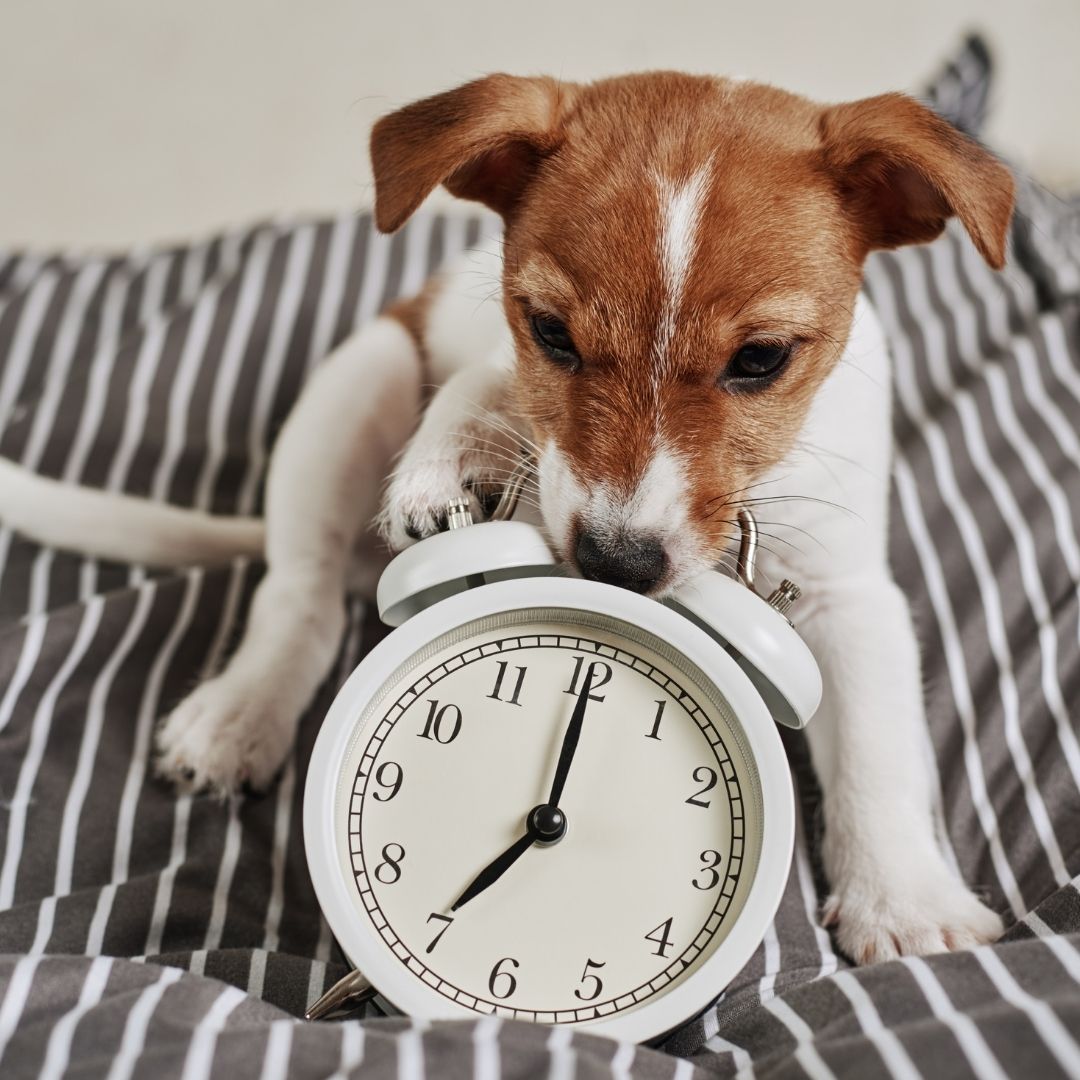Your Cart is Empty
The clocks going back always upsets my dog's routine. What can I do?
October 17, 2023 2 min read

When the clocks go back in the UK, dog owners may face several challenges. Here are some common problems along with suggested solutions:
-
Reduced Daylight for Walks:
-
It gets dark and the morning and dark in the evening! Let’s face it, all walks, especially long ones, are better in daylight aren’t they? So if at all possible try to adjust your days so you can take your dog for a walk during daylight hours, the rise of flexible and hybrid working may mean you could plan in a lunchtime walk. And of course, get out at the weekend. If you can’t do that then think about investing in reflective gear and a head torch to enhance visibility and therefore safety. And stick to well lit routes.
-
-
Disruption in Routine:
-
Dogs thrive on routine, so sudden changes in the timing of walks and meals, and also bed times can cause stress or confusion. It could help to gradually shift your dog's schedule by small increments over a few days to help them adapt to the time change. Just like we do with young children at this time of year.
-
-
Separation Anxiety:
-
Some dogs may experience separation anxiety if they are used to their owners being home during certain hours, and now find themselves alone in the dark for longer periods. Again, you could gradually acclimatise your dog to longer periods alone by leaving them for short durations and gradually increasing the time. Consider using toys to keep them occupied.
-
-
Lack of Daylight for Playtime:
-
If your dog enjoys outdoor playtime, the reduced daylight can limit their opportunities for exercise and play. You could consider adding indoor play activities or invest in toys that stimulate mental and physical activity. Or look at the lighting in your garden and visit well lit local parks. A lot of places have doggie play parks these days, check these out to see if they are lit.
-
-
Behavioural Changes:
-
Some dogs may start to misbehave due to the disruption in their routine and the decreased outdoor activity so make sure to provide mental stimulation and keep their minds occupied.
-
-
Seasonal Affective Disorder (SAD):
-
Just like humans, dogs can be affected by changes in light, which can lead to symptoms similar to Seasonal Affective Disorder. Try to Increase exposure to natural light during the day by opening curtains and ensuring your dog spends time in well-lit areas.
-
Remember to monitor your dog's behaviour and wellbeing during this transition period and think about how they were affected last year. If you notice any significant changes or signs of distress, consult your vet for additional advice.
Leave a comment
Comments will be approved before showing up.
Subscribe
Sign up to get the latest on sales, new releases and more …

